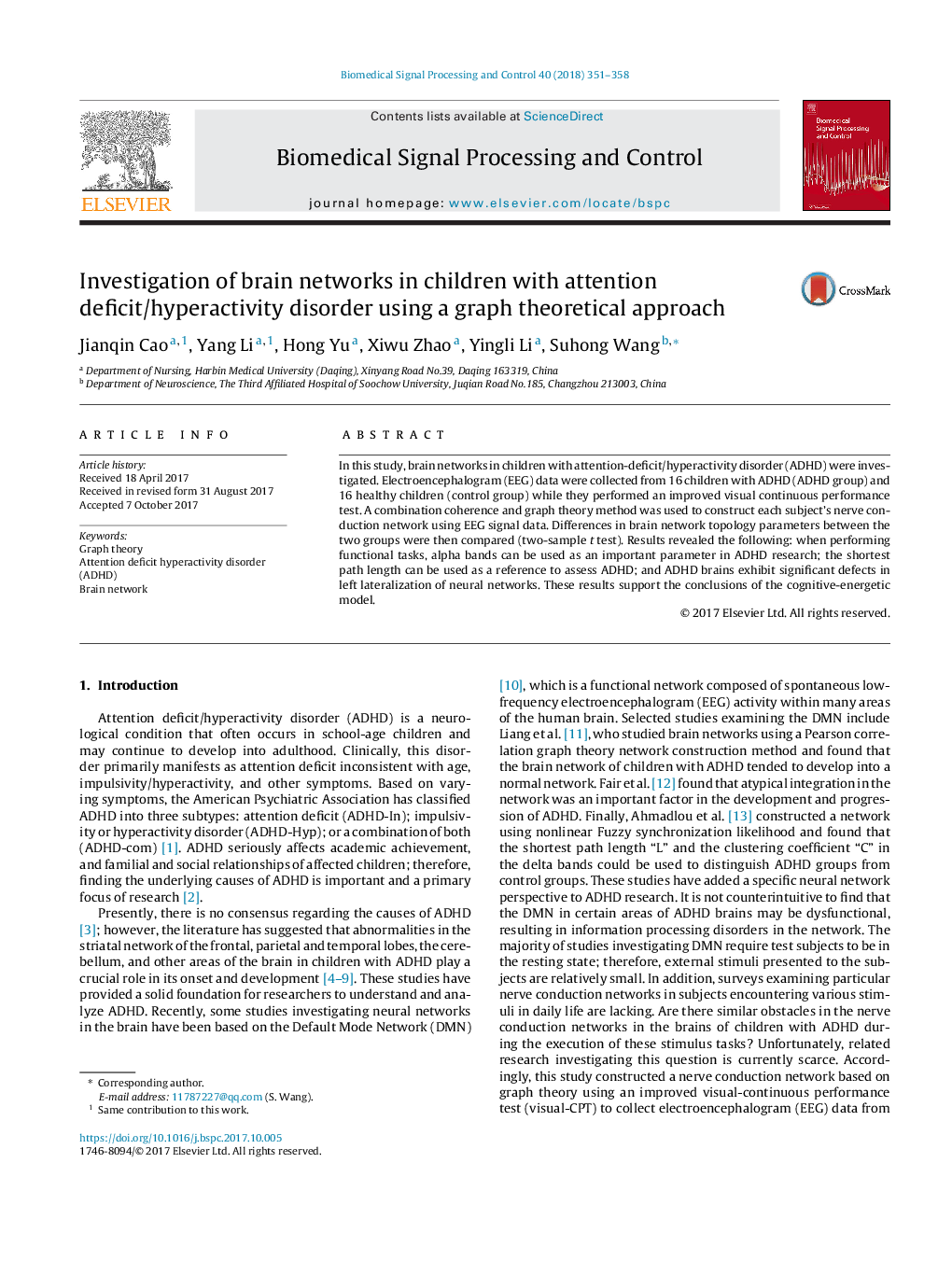| Article ID | Journal | Published Year | Pages | File Type |
|---|---|---|---|---|
| 6950992 | Biomedical Signal Processing and Control | 2018 | 8 Pages |
Abstract
In this study, brain networks in children with attention-deficit/hyperactivity disorder (ADHD) were investigated. Electroencephalogram (EEG) data were collected from 16 children with ADHD (ADHD group) and 16 healthy children (control group) while they performed an improved visual continuous performance test. A combination coherence and graph theory method was used to construct each subject's nerve conduction network using EEG signal data. Differences in brain network topology parameters between the two groups were then compared (two-sample t test). Results revealed the following: when performing functional tasks, alpha bands can be used as an important parameter in ADHD research; the shortest path length can be used as a reference to assess ADHD; and ADHD brains exhibit significant defects in left lateralization of neural networks. These results support the conclusions of the cognitive-energetic model.
Related Topics
Physical Sciences and Engineering
Computer Science
Signal Processing
Authors
Jianqin Cao, Yang Li, Hong Yu, Xiwu Zhao, Yingli Li, Suhong Wang,
